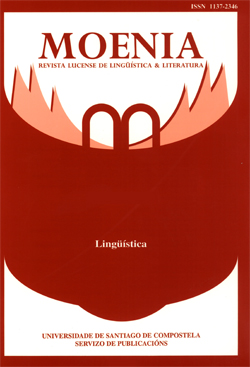Vol 23 (2017), Monográfico. Morfosintaxis y semántica del verbo en español: historia y descripción / Susana Azpiazu, coord.
Submitted: 08-03-2017
Accepted: 10-11-2017
Published: 05-07-2018
The productivity of the Spanish subjunctive in complement clauses is assessed in diachronic perspective, through comparison of variation patterns in three pre-modern texts and a present-day speech corpus. Evidence for the earlier use of the subjunctive as a subordination marker is that it was favored over the indicative in the absence of the complementizer que. Productivity as measured by main-clause verb type frequency remains mostly unchanged, with one expanding niche: a broad class of expressions anchored in ser (e.g., es bueno). A second measure of productivity is the greater favoring of the subjunctive by non-frequent than by frequent main-clause verbs. Nevertheless, a tendency toward a bimodal distribution of main-clause verbs according to their subjunctive rate indicates lexical routinization: some hardly ever take the subjunctive, while others do so categorically, accounting for more than half of all subjunctive occurrences. Structural routinization takes the form of co-occurrence patterns with main-clause negative polarity and interrogatives, both of which increasingly favor the subjunctive. In sum, despite pockets of productivity, use of the subjunctive in complement clauses, as in other Romance languages (Poplack et al. 2018) is largely driven, even in pre-modern texts, by the lexical identity of the main-clause verb, abetted by local structural elements.
language variation, frequency measures, productivity, routinization, subjunctive






